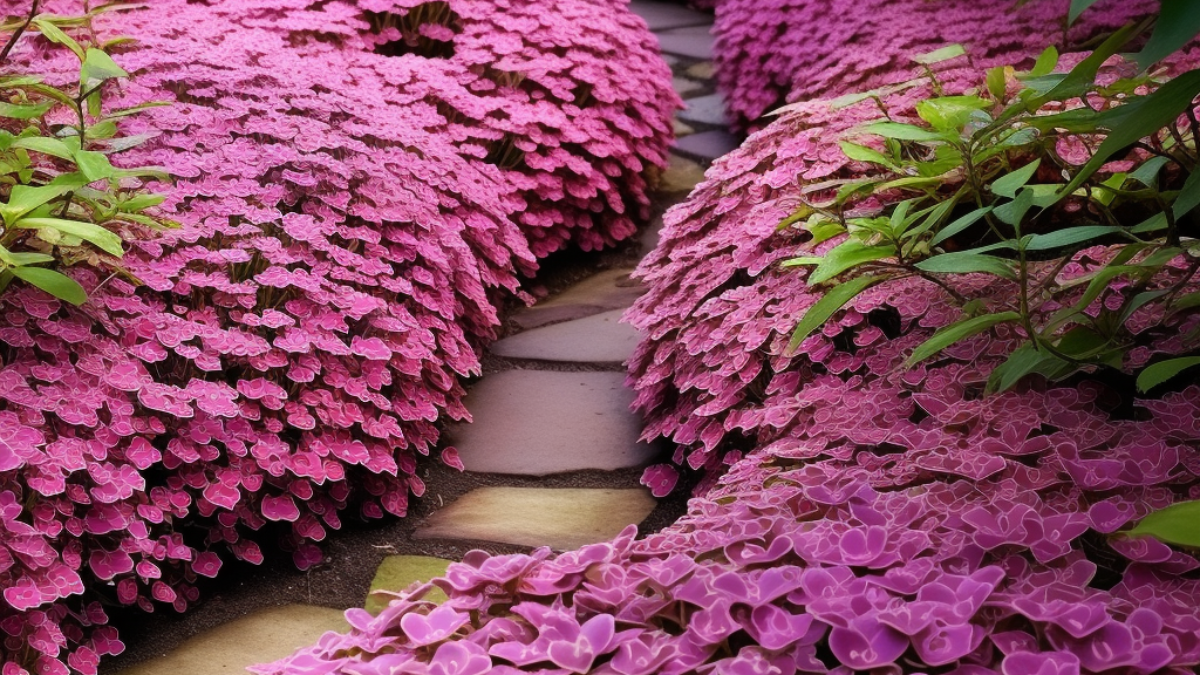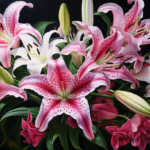Imagine a landscape where every inch of bare soil is transformed into a living canvas of color and texture. This is the enchanting world of ground covers, a horticultural wonder that not only adds aesthetic appeal to your outdoor spaces but also contributes to the health of the ecosystem. In this exploration of ground covers, we’ll delve into their captivating characteristics, their role in gardening, and the art of cultivating these natural masterpieces.
Unearthing the Essence
Ground covers, as the name suggests, are plants that spread across the ground, forming a dense carpet-like cover. These living tapestries can range from low-growing flowering plants to ornamental grasses, creating a visual feast that can rival even the most elaborate flowerbeds. Often overlooked in favor of more towering plants, ground covers offer a unique charm that can completely transform the way we experience our gardens.
Ground covers serve a multitude of purposes, from erosion control to weed suppression. They act as natural shields for the soil, protecting it from the erosive forces of wind and rain. This is particularly valuable on slopes or areas prone to erosion, where these humble plants play a significant role in preserving the landscape’s integrity.
The Art of Selection
Choosing the right ground covers for your garden involves a thoughtful selection process. Consider the characteristics of your garden, such as sunlight exposure, soil type, and moisture levels. Do you have a shady corner that yearns for a splash of color? Perhaps a sunny spot that could benefit from some low-maintenance greenery? These are the spaces where ground covers shine.
Ground cover plants come in an array of shapes, sizes, and colors, allowing you to create dynamic compositions that showcase your landscape’s personality. Whether you’re aiming for a vibrant mosaic of flowers or a serene sea of lush green, there’s a ground cover to suit every design aspiration.
The Journey of Cultivation
Cultivating ground covers involves more than just planting them; it’s about nurturing a living canvas that evolves and thrives over time. The process begins with proper soil preparation. Since these plants hug the earth, ensuring nutrient-rich and well-draining soil is essential. Add organic matter to improve the soil’s structure and fertility, giving your ground covers the foundation they need to flourish.
As you plant your chosen ground covers, consider their spacing requirements. While they are intended to create a dense cover, providing each plant with enough room to grow ensures healthier and more robust growth. Proper spacing also prevents overcrowding, which could lead to competition for resources and hinder their full potential.
The Symphony of Benefits
Beyond their aesthetic appeal, ground covers offer an array of benefits that make them valuable assets in any garden. By creating a living layer over the soil, they help to maintain a more consistent soil temperature, reducing fluctuations that can stress plants and hinder their growth.
Weed suppression is another advantage offered by ground covers. As they spread and interlock their roots, they create a natural barrier that impedes the growth of unwanted weeds. This not only saves you time and effort in weeding but also contributes to the overall health of your garden by reducing the competition for nutrients and water.
A Pathway to Imagination
Ground covers also serve as a unique pathway to unleashing your creative imagination. By strategically placing ground covers along walkways, you can transform simple trails into picturesque journeys. Picture a stroll through a garden where each step is cushioned by a cushion of thyme, releasing its soothing aroma with every footfall. Or imagine a path lined with flowering ground covers that guide you through a vibrant tapestry of color.
Nurturing the Carpet of Life
Caring for your ground covers involves regular maintenance to ensure they remain healthy and vibrant. Pruning or trimming is often necessary to prevent them from encroaching on other plants or areas. However, this task is usually less labor-intensive compared to maintaining larger shrubs or trees.
Regular watering is essential, particularly during the establishment phase. Mulching around your ground covers helps retain moisture, suppress weeds, and maintain a more even soil temperature. Over time, your ground covers will become more self-sufficient as their root systems establish and adapt to the environment.
The Ever-Changing Canvas
As seasons shift and nature’s rhythm plays out, your ground covers will evolve, painting a new masterpiece with each passing day. From the delicate blooms of spring to the lush verdure of summer and the fiery foliage of fall, ground covers bring the ever-changing beauty of the outdoors right to your doorstep.
So, as you gaze upon the canvas that is your garden, consider the role that ground covers could play in elevating its allure. These unassuming plants have the power to weave together a tapestry of colors, textures, and scents that enhance your outdoor experience and offer a haven for the senses. Whether you’re seeking to add vibrancy, curb erosion, or simply infuse your garden with a touch of magic, ground covers are nature’s answer to creating a living masterpiece that speaks to the heart of gardening’s enchanting artistry.



